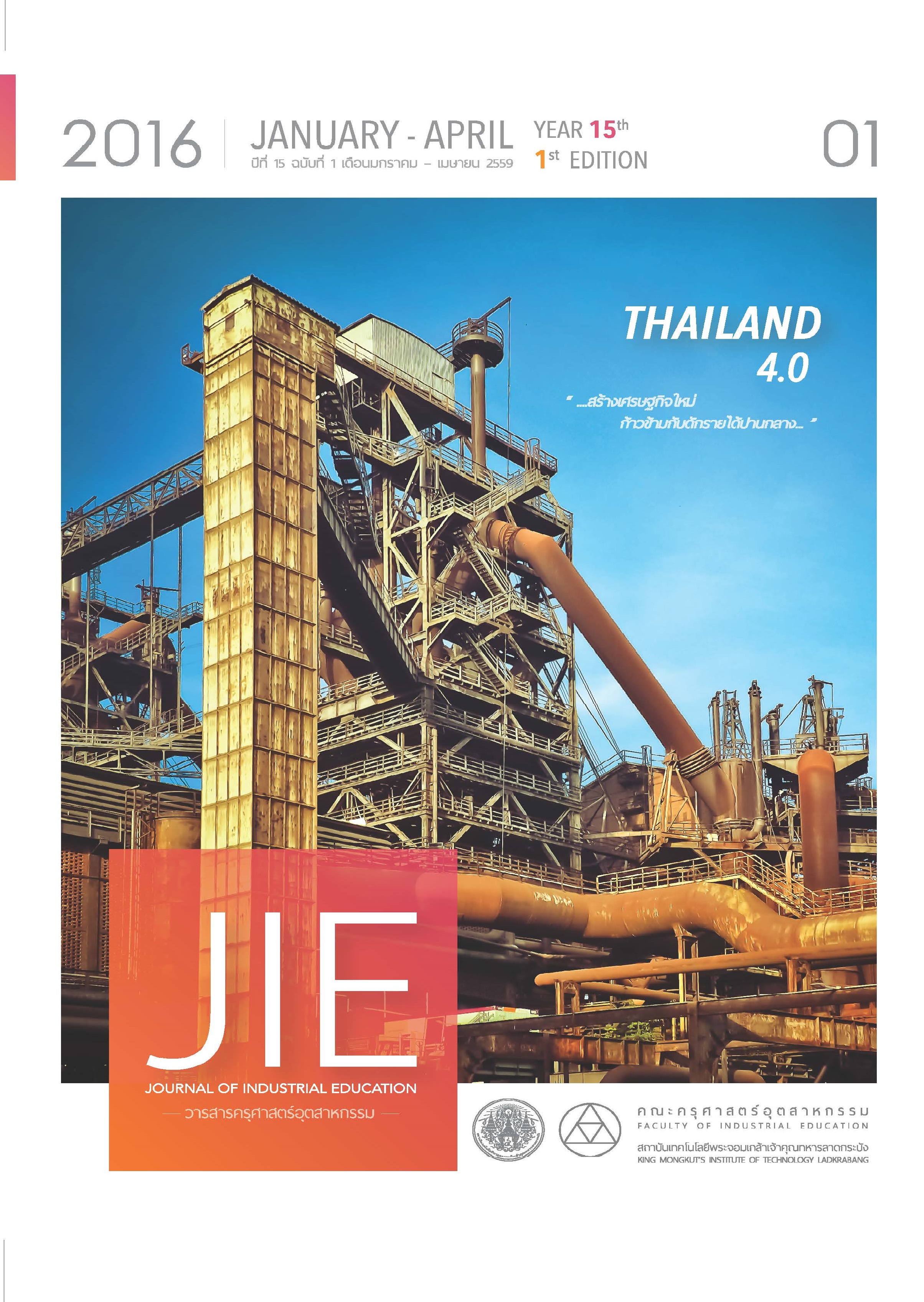DEVELOPMENT OF AN INSTRUCTIONAL MODEL BASED ON MODEL-BASED INQUIRY AND CONTEXT-BASED LEARNING APPROACHES TO PROMOTE SCIENTIFIC REASONING AND TRANSFER OF LEARNING ABILITIES OF LOWER SECONDARY STUDENTS
Keywords:
Instructional Model, Model-Based Inquiry, Context-Based Learning, Scientific Reasoning, Transfer of LearningAbstract
This developmental research aims 1) to develop an instructional model using model-based inquiry and context-based learning approaches to promote scientific reasoning and transfer of learning abilities in lower secondary students and 2) to study the effectiveness of the model. This project consisted of two stages: a developmental stage and an effectiveness evaluation stage. There were two groups of participants: a control group and experimental group both comprising of 50 students, grade 7 in the 2015 Academic Year. Research tools used were a Scientific Reasoning Test and a Transfer of Learning Abilities Test. The model consisted of five stages: (1) Situation Setting (2) Model Development and Testing (3) Scientific Argument (4) Conclusion (5) Application. The results showed the model was successful in developing students’ scientific reasoning and transfer of learning abilities. The experimental group had higher scores for both scientific reasoning and transfer of learning abilities at a .05 significance level. Furthermore, the experimental group achieved higher scores for both scientific reasoning and transfer of learning abilities (Pre-Post Tests) in both scales mentioned
than the control group at the significance level of .05.
References
[2] Zeinedd in A. and Abd-El- Khalick, F. 2010. Scientific reasoning and epistemological commitments: Coordination of theory and evidence among college science students. Journal of Research in Science Teaching, 47(9), p. 1064-1093.
[3] Beyer, C.J. and Davis, E.A. 2008. Fostering second graders' scientific explanations: A beginning elementary teacher's knowledge, beliefs, and practice. Journal of the Learning Sciences, 17(3), p. 381-414.
[4] Mercier, H. and Sperber, D. 2011. Why do humans reason? Arguments for an argumentative theory. Behav Brain Sci, 34(2), p. 57-111.
[5] Hunter, M. 1995. Teacher for transfer. CA: Corwin.
[6] Schunk, D.H. 1991. Learning theories an educational perspective (Vol. 26). New York: Merill.
[7] Piraksa, C., Srisawasdi, N., and Koul, R. 2014. Effect of gender on student's scientific reasoning ability: A case study in thailand. Procedia - Social and Behavioral Sciences,116, p. 486-491.
[8] สำนักงานคณะกรรมการการศึกษาแห่งชาติ. 2545. แผนการศึกษาแห่งชาติ (พ.ศ. 2545-2559). กรุงเทพฯ: สกศ.
[9] Windschitl, M., Thompson, J., and Braaten, M. 2008. Beyond the scientific method: Model-based inquiry as a new paradigm of preference for school science investigations. Science Education, 92(5), p. 941-967.
[10] Bennett, J. 2005. Bringing science to life: The research evidence on teaching science in context. U.K.: University of York.
[11] ทิศนา แขมมณี. 2551. ศาสตร์การสอน: องค์ความรู้เพื่อการจัดกระบวนการเรียนรู้ที่มีประสิทธิภาพ. กรุงเทพฯ: ด่านสุทธาการพิมพ์.
[12] Schwarz, C.V., et al. 2009. Developing a learning progression for scientific modeling: Making scientific modeling accessible and meaningful for learners. Journal of Research in Science Teaching, 46(6), p.632-654.
[13] Campbell, T., Zhang, D., and Neilson, D.2011. Model based inquiry in the high School physics classroom: An exploratory study of implementation and outcomes. The Journal of Science Education and Technology 20(3), p. 258-269.
[14] Walker, J., et al. 2010. Argument driven inquiry: an instructional model for use in undergraduate chemistry labs. In Annual International Conference of the National Association of Research in Science Teaching (NARST).
[15] De Jong, O. 2008. Context-based chemical education: How to improve it. Chemical Education International, 8(1), p. 1-7.
[16] Johnson, A.F., and Rutherford, S. 2010. Transfer of knowledge in science courses For elementary education majors. Journal Of College Science Teaching, 39(4), p. 80-88.
[17] พรพรรณ ธาราแดน พรรณี ลีกิจวัฒนะ และ ปริยาภรณ์ ตั้งคุณานันต์. 2556. ตัวแปรที่ส่งผลต่อผลสัมฤทธิ์ทางการเรียน วิชาคอมพิวเตอร์ของนักเรียนชั้นประถมศึกษาปีที่ 5 โรงเรียนอัสสัมชัญธนบุรี. วารสารครุศาสตร์อุตสาหกรรม, 12(2), น.126-133.
Taradan, P., Leekichwattana, P., and Tungkunanan, P. 2013. Variables effecting on computer achievement of Prathomsuksa 5 students of Assumption College Thonburi. Journal of Industrial Education, 12(2), p.126-133.
[18] Mestre, J.P. 2002. Probing adults' conceptual understanding and transfer of learning via problem posing. Journal of Applied Developmental Psychology, 23(1), p. 9-50.
[19] อารี พันธ์มณี. 2546. จิตวิทยาสร้างสรรค์การเรียนการสอน. กรุงเทพฯ: ใยไหม เอดดูเคท.
[20] Kuhn, J. and Müller, A. 2014. Context-based science education by newspaper story problems: A study on motivation and learning effects. Perspectives in Science,2(1-4), p. 5-21.
Downloads
Published
How to Cite
Issue
Section
License
"The opinions and contents including the words in papers are responsibility by the authors."
"ข้อคิดเห็น เนื้อหา รวมทั้งการใช้ภาษาในบทความถือเป็นความรับผิดชอบของผู้เขียน"



